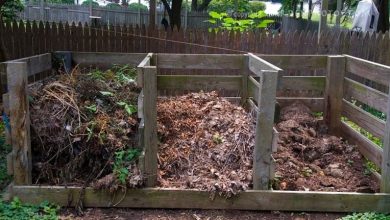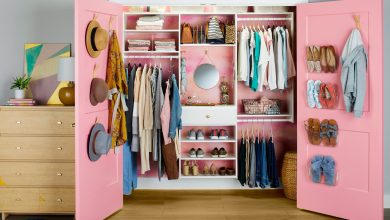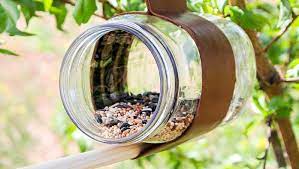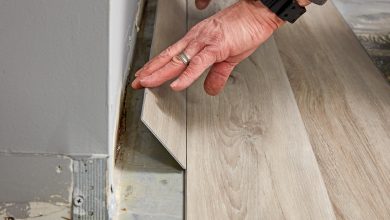DIY Plantation Shutters: Your Complete Guide
Plantation shutters are a popular window treatment choice in Australia due to our warm climate. They provide light control and privacy while enhancing the look of your home. I’ll cover all you need to know about DIY plantation shutters including different styles, materials, installation tips, costs considerations and more.
Diy Plantation Shutters Kit
One of the easiest ways to get started with DIY plantation shutters is to purchase an inexpensive kit. Kits include pre-cut wood or vinyl shutter parts, hardware and installation instructions. Many home improvement stores sell basic starter kits for around $100-200 that are suitable for smaller windows. Larger “project kits” with additional slats, blades and hardware can costume $300-500 depending on the size required. Kits simplify the process but choices may be limited in terms of wood species, finishes and custom options.
Diy Plantation Shutters For Windows
Windows is the most common application for plantation shutters. When installing on windows, it’s important to accurately measure the opening, account for obstructions like window cranks, and add sufficient reveal (space between the window frame and where the shutter mounts). Most shutters mount inside the window frame, but exterior mount is also an option. With windows, focus on achieving a clean, square fit that doesn’t interfere with operation and allows the shutter to fully open.
Cheap Diy Plantation Shutters
One way to save money on DIY plantation shutters is to choose affordable materials like vinyl, composite wood, or vinyl-coated wood. Vinyl is very low maintenance as it won’t rot, crack, or peel over time like bare wood. It’s also inexpensive, ranging from $5-8 per square foot installed, making it suitable for larger projects on a budget. Vinyl has limited design options compared to wood but comes in white, woodgrain, or painted colors to match any interior. Some vinyl styles look almost identical to painted wood at a fraction of the cost.
Pvc Plantation Shutters
PVC (polyvinyl chloride) is another vinyl option that is budget-friendly for DIY plantation shutters. PVC is durable, easy to clean, and withstands damage better than other vinyls. It won’t rot, split, crack, or warp over time like wood. Popular styles are louvered and paneled. The material is available in white, wood-grain prints, and custom colors that can be painted over. At around $8-12 per square foot installed, PVC shutters are more affordable than comparable wood shutters, saving 30-50% over wood without sacrificing longevity. They are a smart choice for high-traffic areas like kids’ rooms.
Diy Plantation Shutters For Sliding Glass Doors
Sliding glass doors present a unique challenge for shutters due to their width, but the finished look is well worth the effort. For DIY, measure the entire door opening and add 2-4 inches on each side for sufficient light gaps when closed. Louvered or raised pane styles work best. Mount panels individually using heavy-duty detachable brackets for easy removal if the door track ever needs servicing. Alternatively, consider sectional shutters that are installed in three or more pieces to avoid this issue. Proper installation is key to ensuring smooth door operation with shutters in place.
Disadvantages Of Plantation Shutters
While plantation shutters provide many benefits, there are some disadvantages to be aware of:
- Higher initial cost compared to basic blinds or curtains. DIY can lower the price significantly but top-quality wood shutters may exceed $30 per square foot professionally installed.
- Time consuming and tricky to measure and install correctly, especially for windows with obstructions or odd shapes. Hiring a pro mitigates installation difficulties but adds to the cost.
- Heavyweight wooden shutters can be unwieldy to open and close, especially on upper floor windows. Lift systems help but involve additional parts and assembly.
- Regular light dusting is required as plantation shutters show dirt easily due to their intricate slat designs. Proper sealing and topcoats enhance ease of cleaning for low maintenance.
- Limited in color/style options for resale value. Bold color choices or non-traditional designs may not appeal to future owners. Stick to classic styles and neutral shades to retain kerb appeal longer.
Overall, the pros generally outweigh the cons if quality materials, proper measuring, and expert installation are used. Factoring in expected longevity and energy savings, shutters provide excellent return on investment.
Difference Between Shutters And Plantation Shutters
The key differences between regular shutters and plantation shutters come down to design and functionality:
- Traditional exterior shutters are solid panels that provide basic window coverage but typically do not overlap or stack vertically like interior plantation shutters. They are more for decoration than light/sun control.
- Plantation shutters feature numerous narrow louvered slats or horizontal panels that interlock to overlap completely closed or open partially in gradual increments for tailored light and privacy levels.
- Plantation shutters mount inside window frames like blinds versus the outside wall placement of traditional exterior shutters. They are intended primarily for light/sun regulation versus wind/storm protection, as exterior shutters provide.
- Plantation shutters are available in numerous wood species and can mimic the look of carved exterior shutters while adding multi-positional functionality and sleek, unobstructed indoor installation that enhances interior design flexibility and view potential.
In summary, while both provide beautiful window treatments, only plantation shutters combine tailored light control with a seamless indoor aesthetic for ultimate versatility and style.
FAQs
What type of shutters are the cheapest?
The most affordable shutters for DIY projects are vinyl, PVC, or composite styles. These cost approximately half as much as comparable wood shutters, coming in at around $5-12 per square foot installed. Vinyl requires virtually no maintenance like painting, either. For a very low budget, faux wood blinds can sometimes mimic the look of shutters for well under $100 complete.
Are PVC shutters cheaper than wood?
Generally yes, PVC shutters provide significant cost savings over wood. PVC shutters typically range from $8-12 per square foot installed, around 30-50% less expensive than wood shutters. Beyond the initial material cost savings, PVC won’t ever require repainting, staining or sealing like bare wood which adds to long term maintenance savings as well. Both will outlast basic vinyl in terms of dent and crack resistance too.
What is the best product for plantation shutters?
When it comes to products, top-grain hardwoods like mahogany, teak, cherry, or African mahogany will provide the highest quality shutters that last decades with proper care. However, these can exceed $40 per square foot installed. At a better balance of performance and price point, vinyl-wrapped composite, fiberglass, and PVC styles around $10-15 per square foot are excellent choices. For indoor rooms receiving less weather exposure, even painted wood can offer great bang for the buck between $15-25 per square foot, depending on design complexity.
What can I use instead of plantation shutters?
Some popular alternatives to plantation shutters include:
- Roller shades, room darkening blinds, or blackout panels for complete light-blocking ability.
- Faux wood blinds for a simple shuttered look at a lower cost.
- Roman shades or sheer curtains layered with lighting-blocking liner fabrics for softening light and obscuring views.
- Exterior roll-down shutters, specially fitted security styles, for storms or extra privacy when needed.
- Bamboo or wood blinds for naturally warming texture that still allows light modulation.
While no substitute mimics the tailored light control of shutters, these options provide stylistic variety and performance for different design aims and budgets.
What is the difference between blinds and plantation shutters?
The main differences are:
- Plantation shutters overlap fully closed and can be partially opened in gradual increments to control light and privacy levels precisely. Blinds generally only offer fully open or closed positions.
- Shutters are mounted inside window frames, flush with the wall-like interior molding, maintaining an unobstructed view. Blinds require side rails installed in front of the window glass.
- Shutters are made of wood, vinyl or composite for natural aesthetics and longevity. Blinds come in fabric, faux wood or aluminum.
- Shutters offer enhanced dust resistance, noise-blocking ability, and insulating properties compared to basic slat or pleated blinds.
- Initial shutter costs are higher but they add proportionate resale value better than blinds due to their custom installed appearance.
In essence, shutters integrate more seamlessly with design goals while enabling far superior light and privacy modulation for total window treatment versatility.



